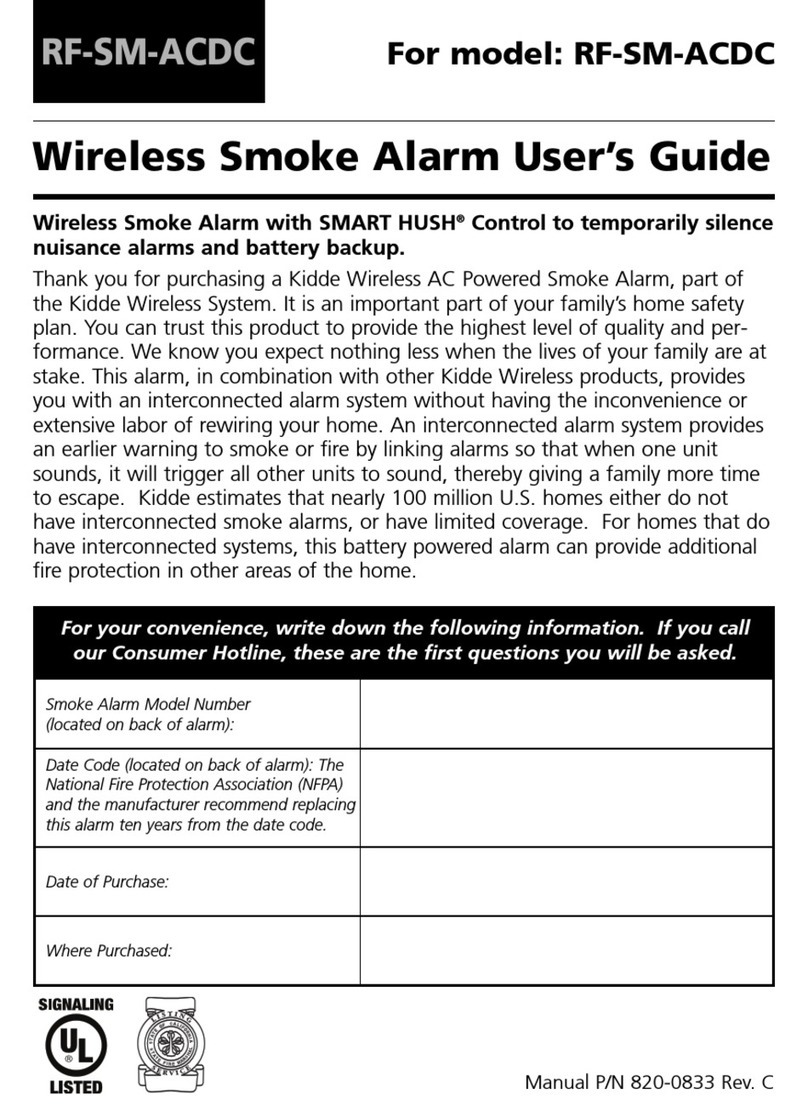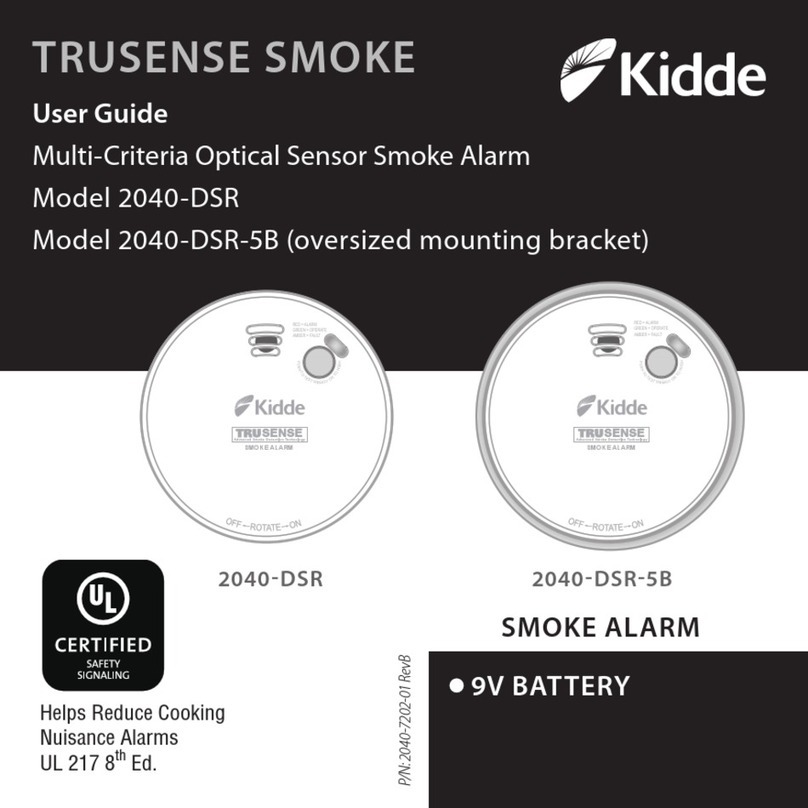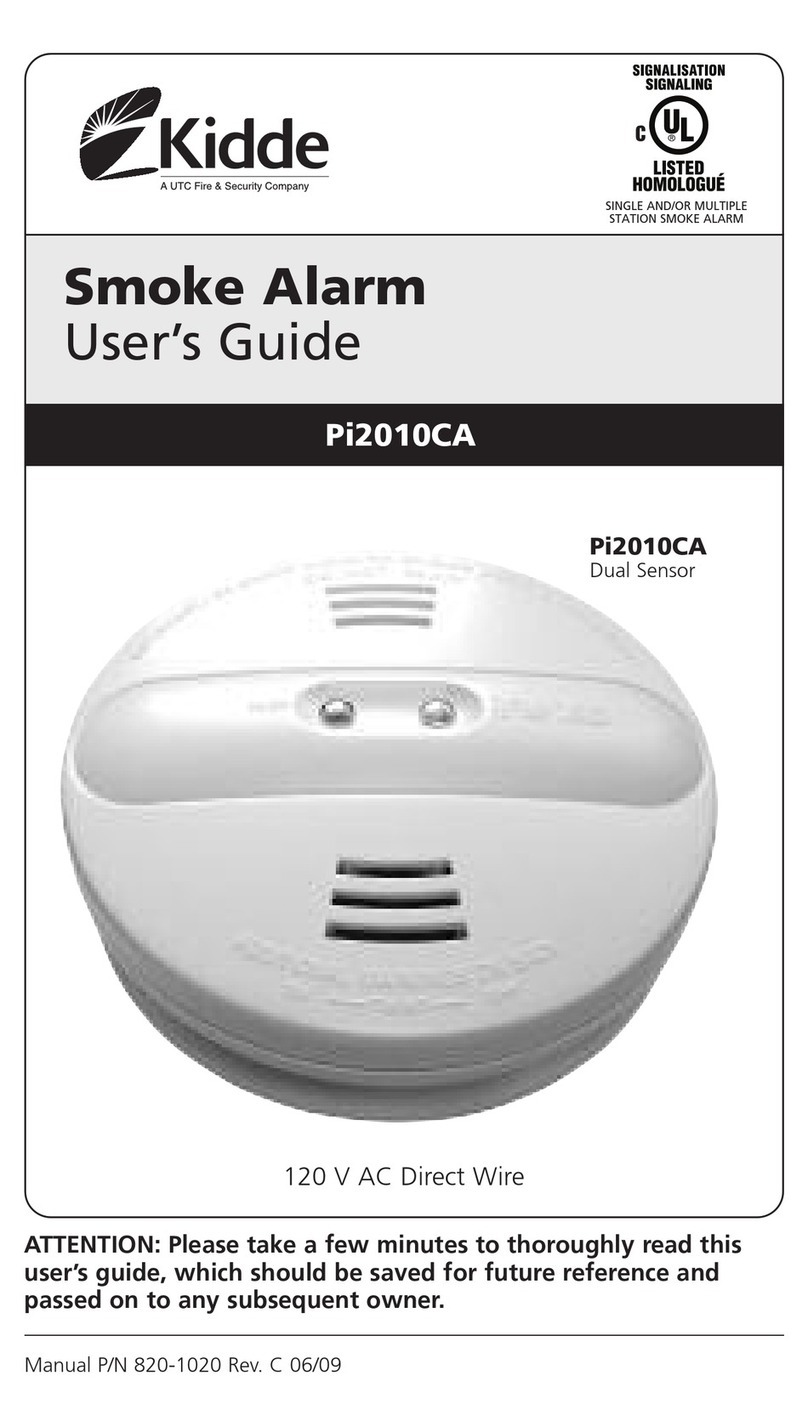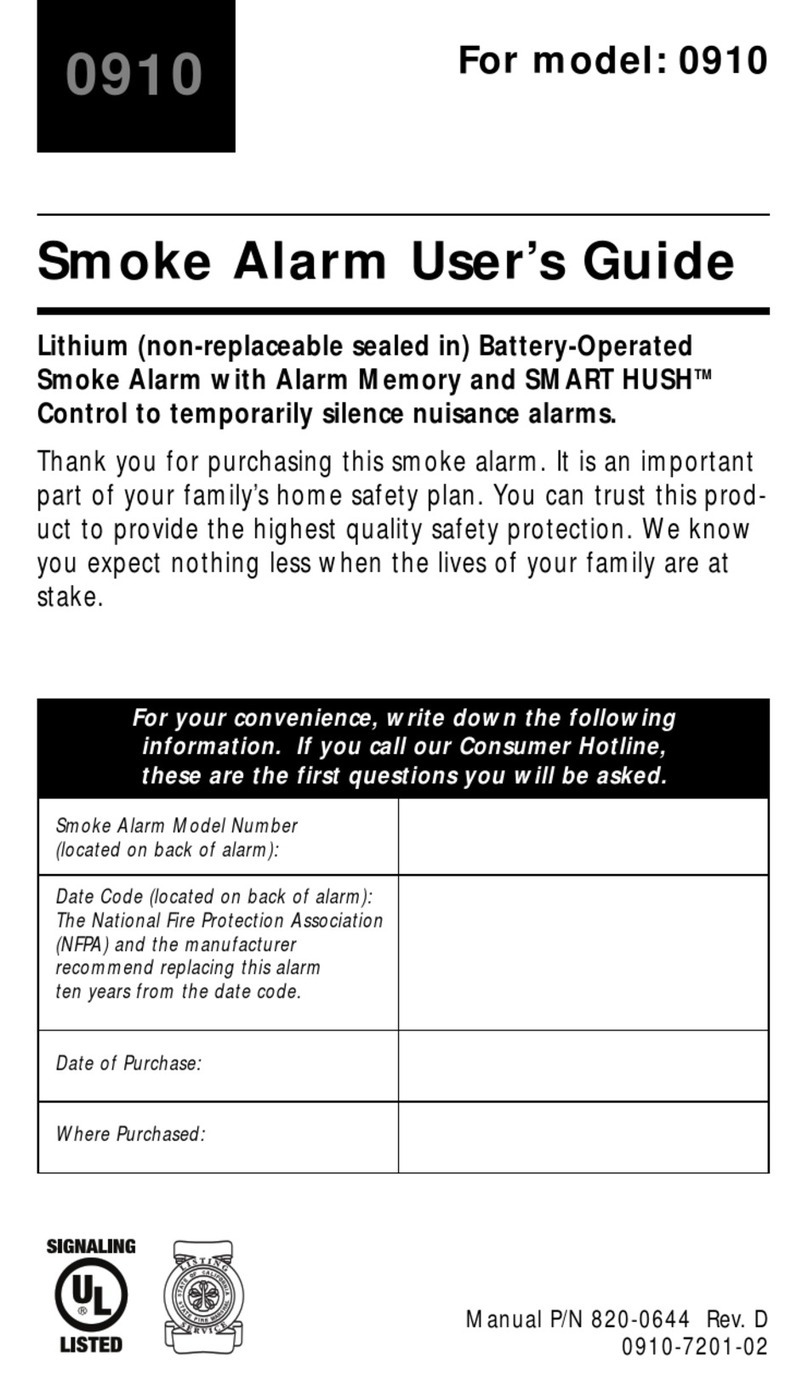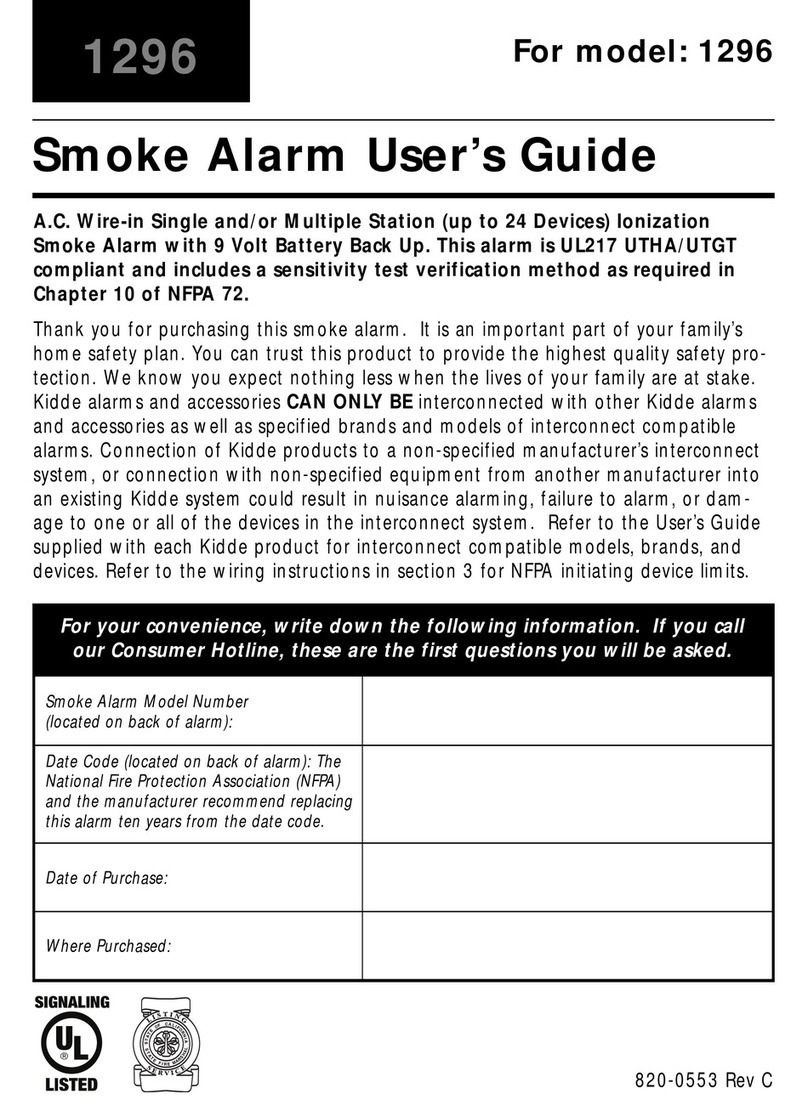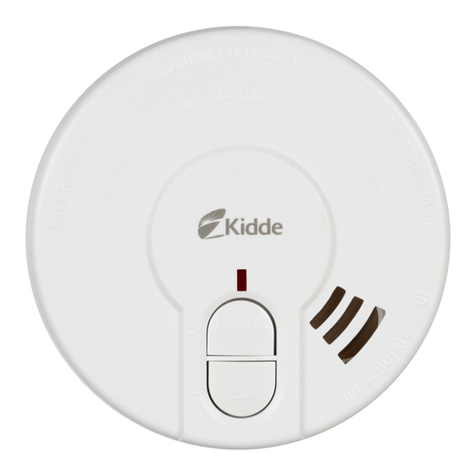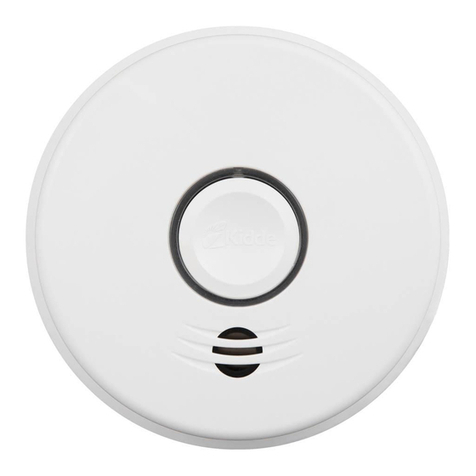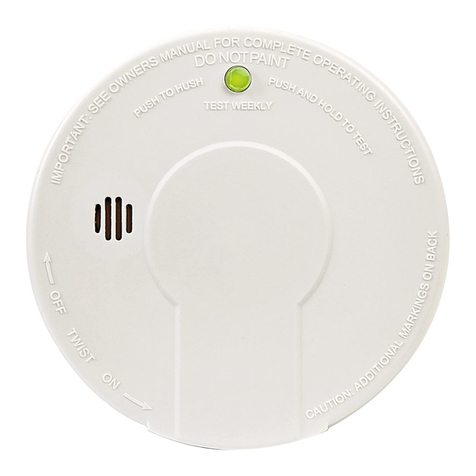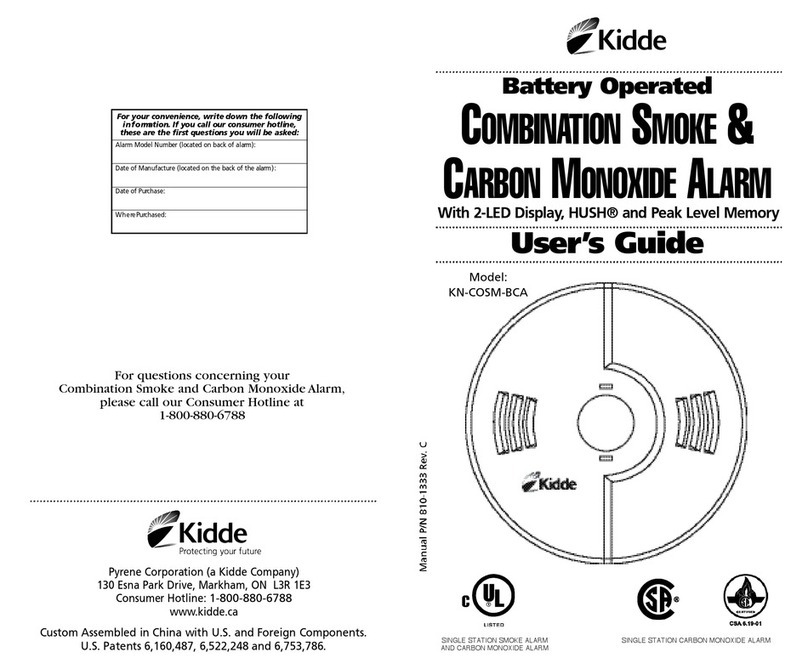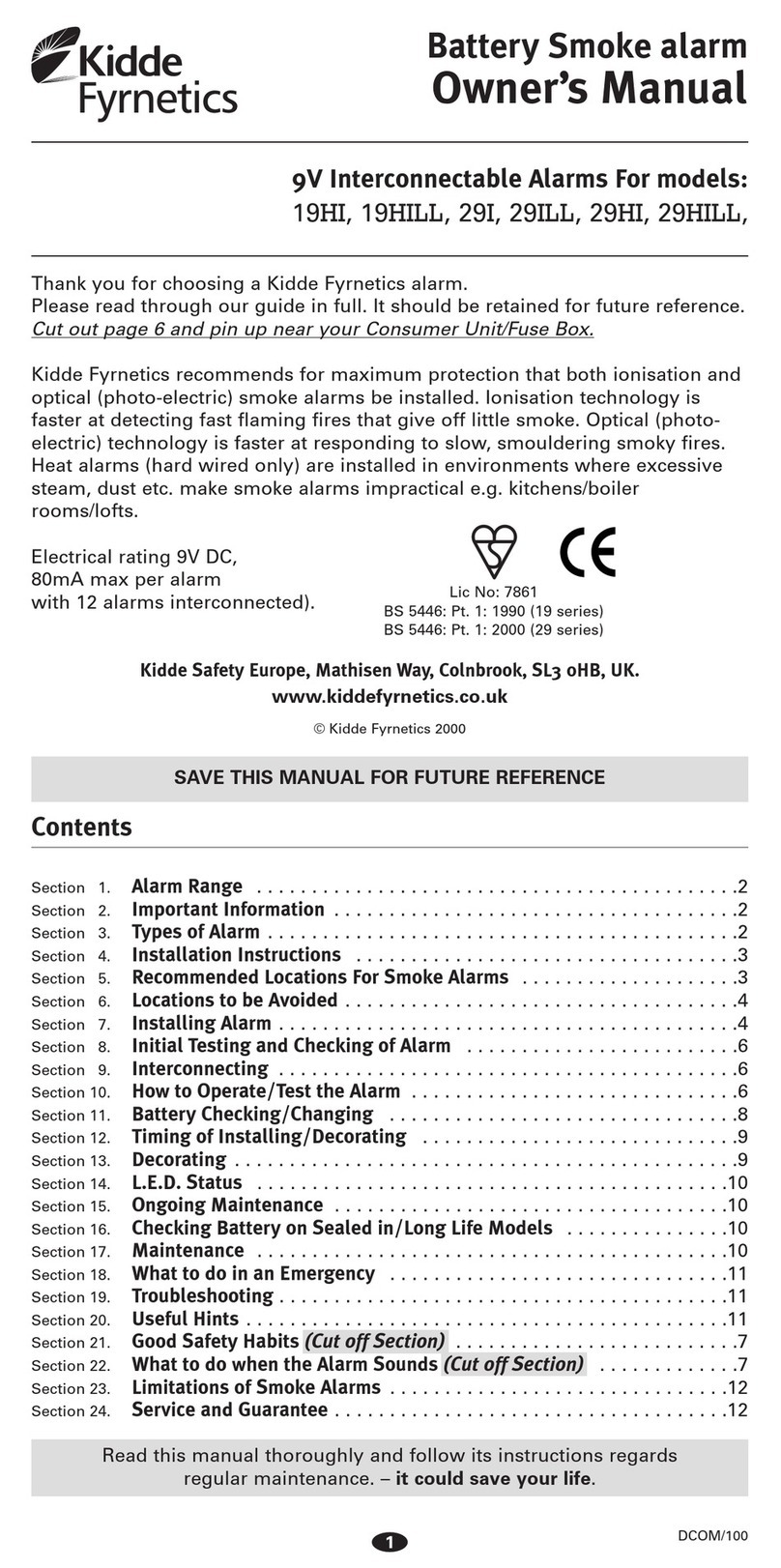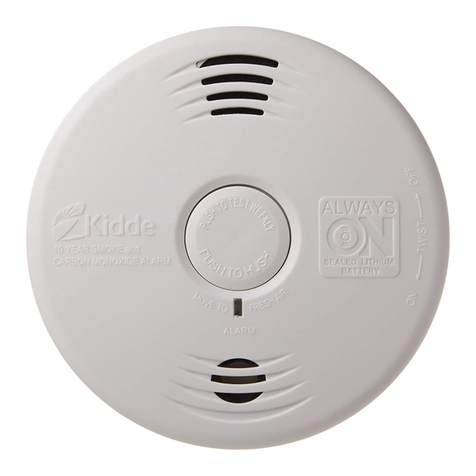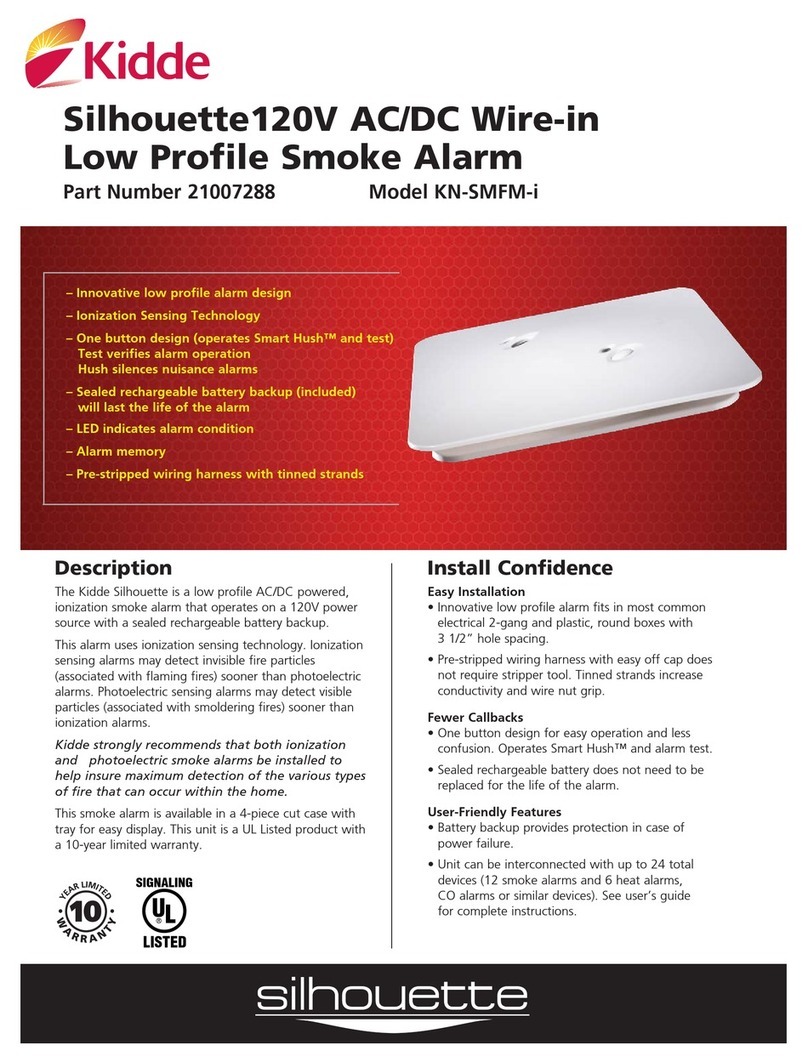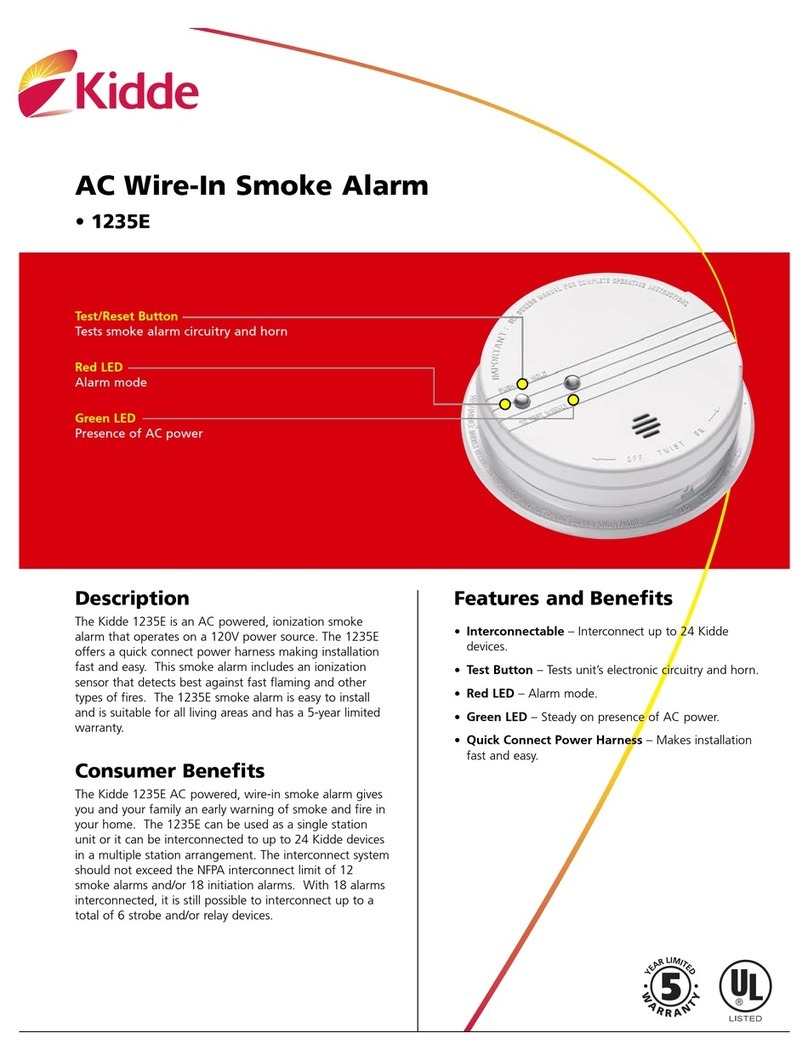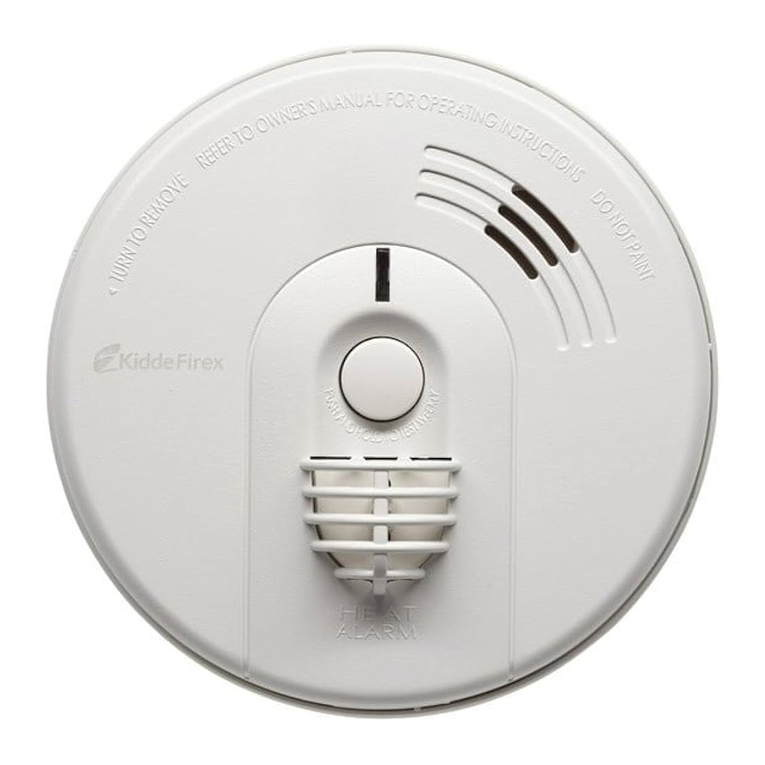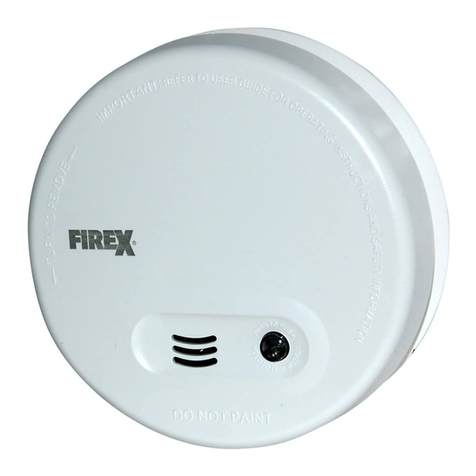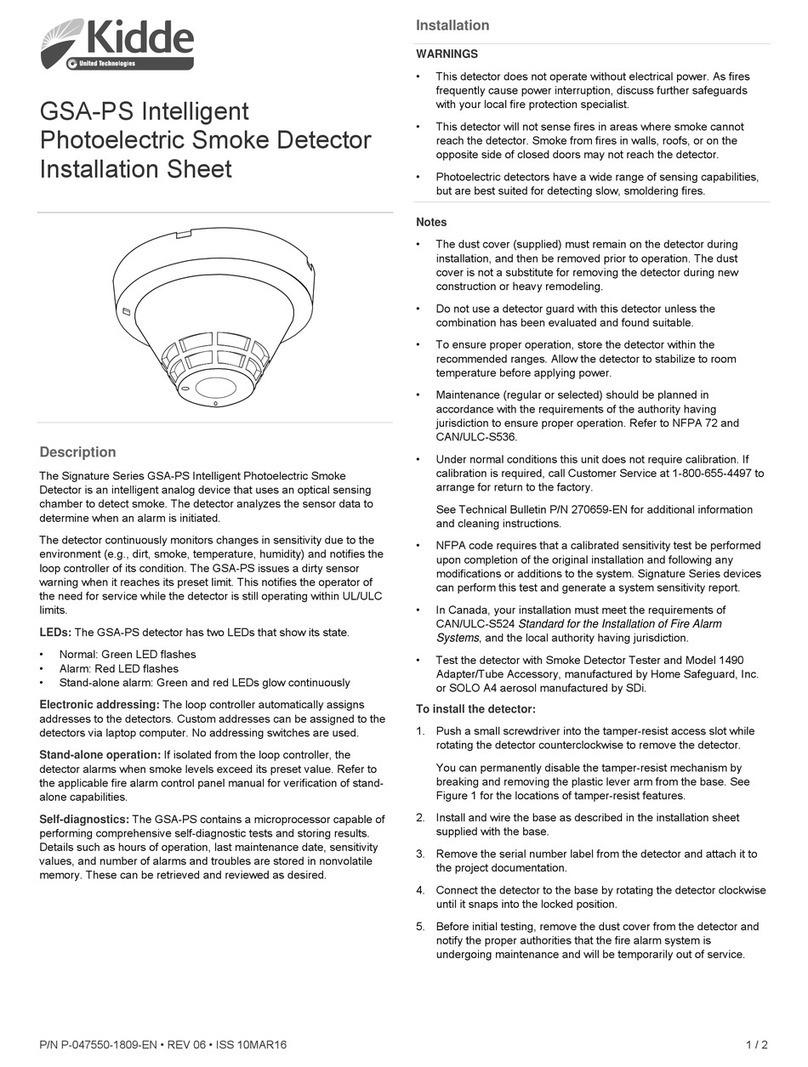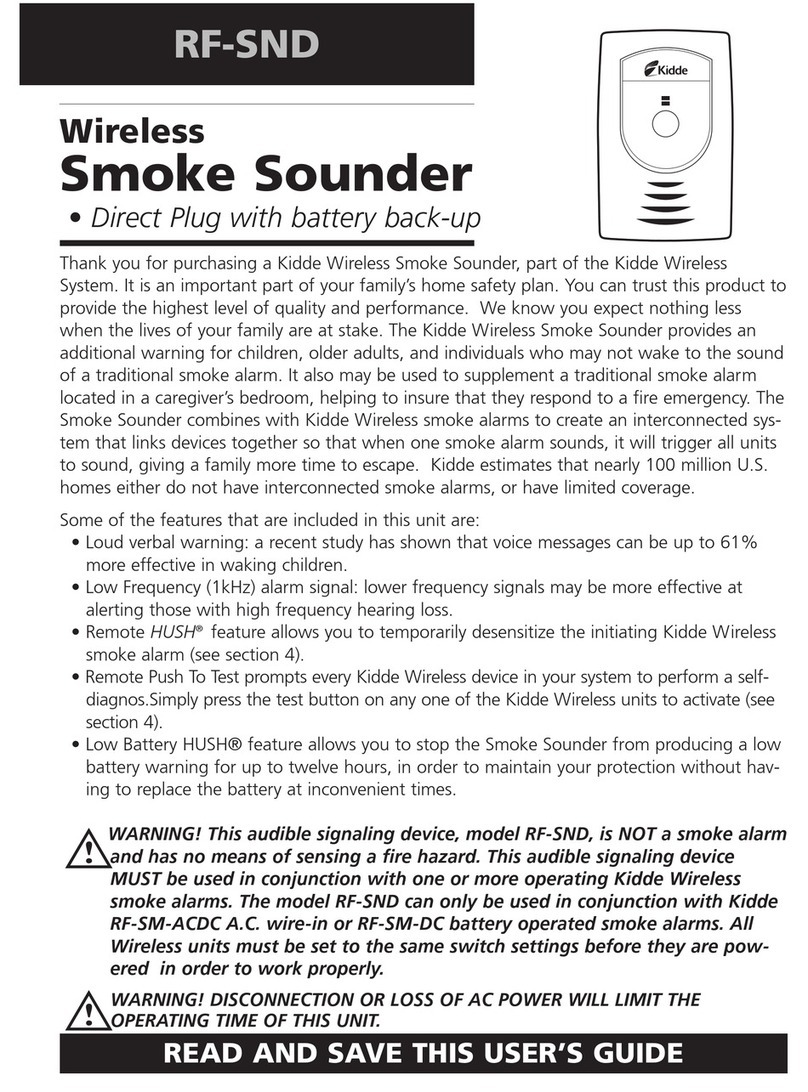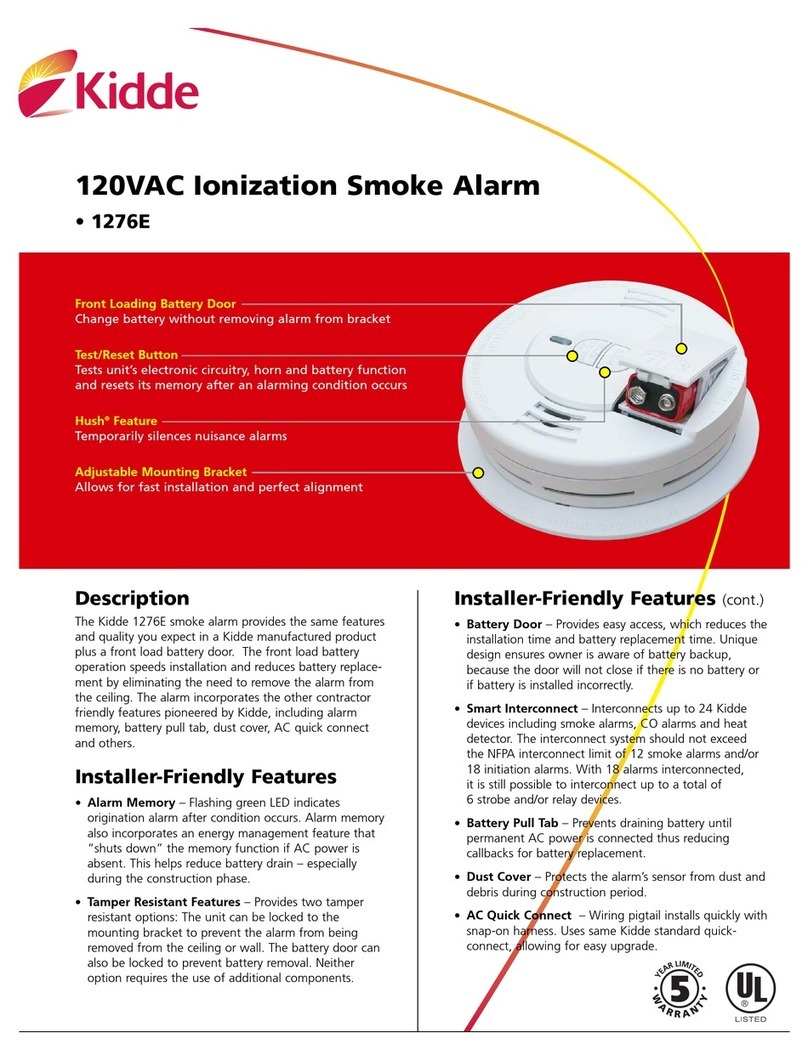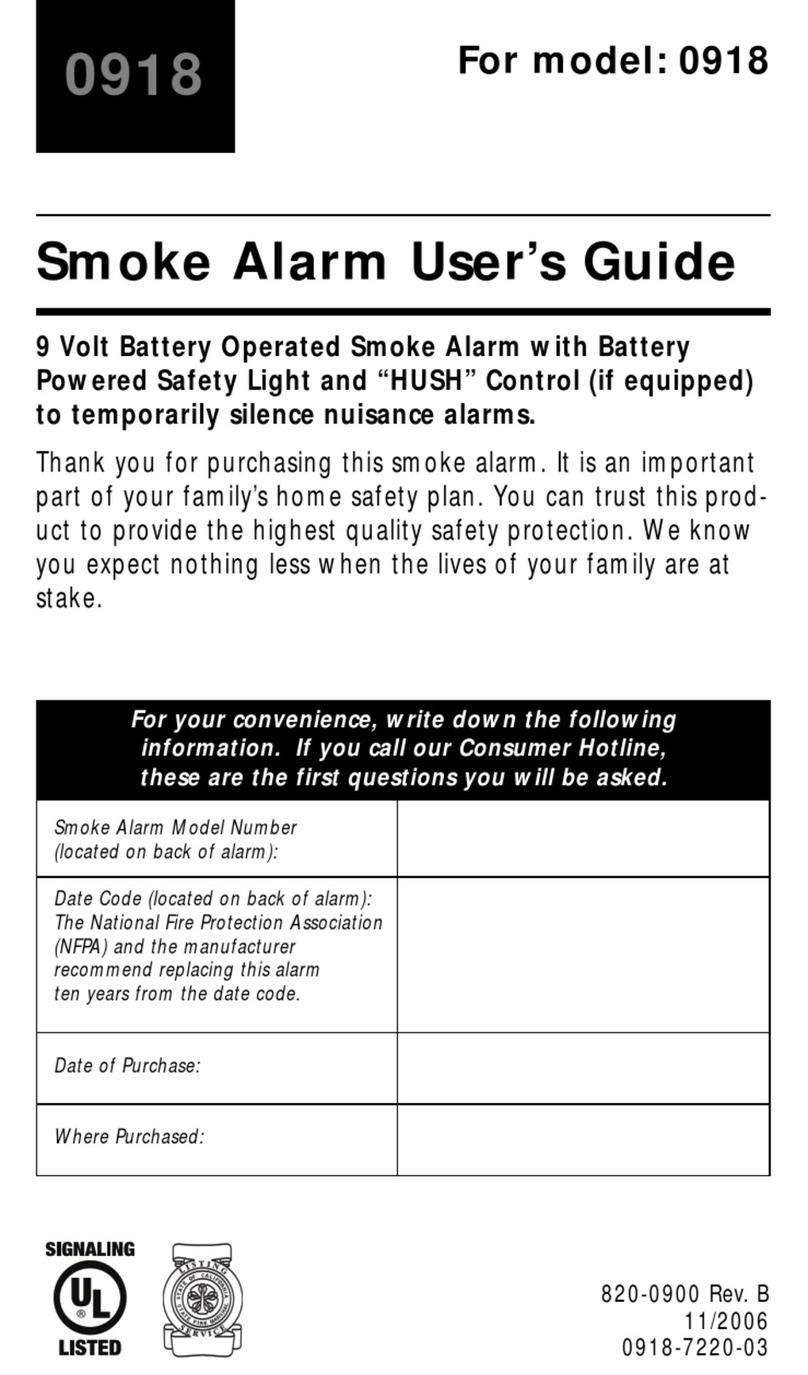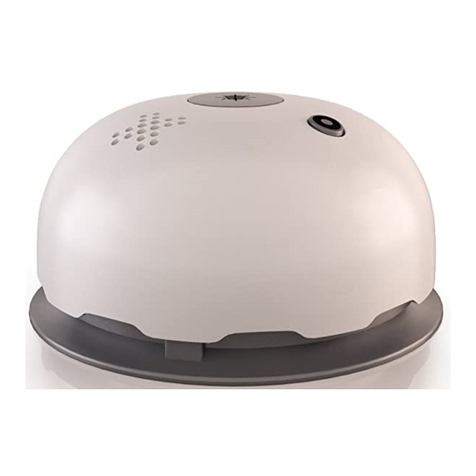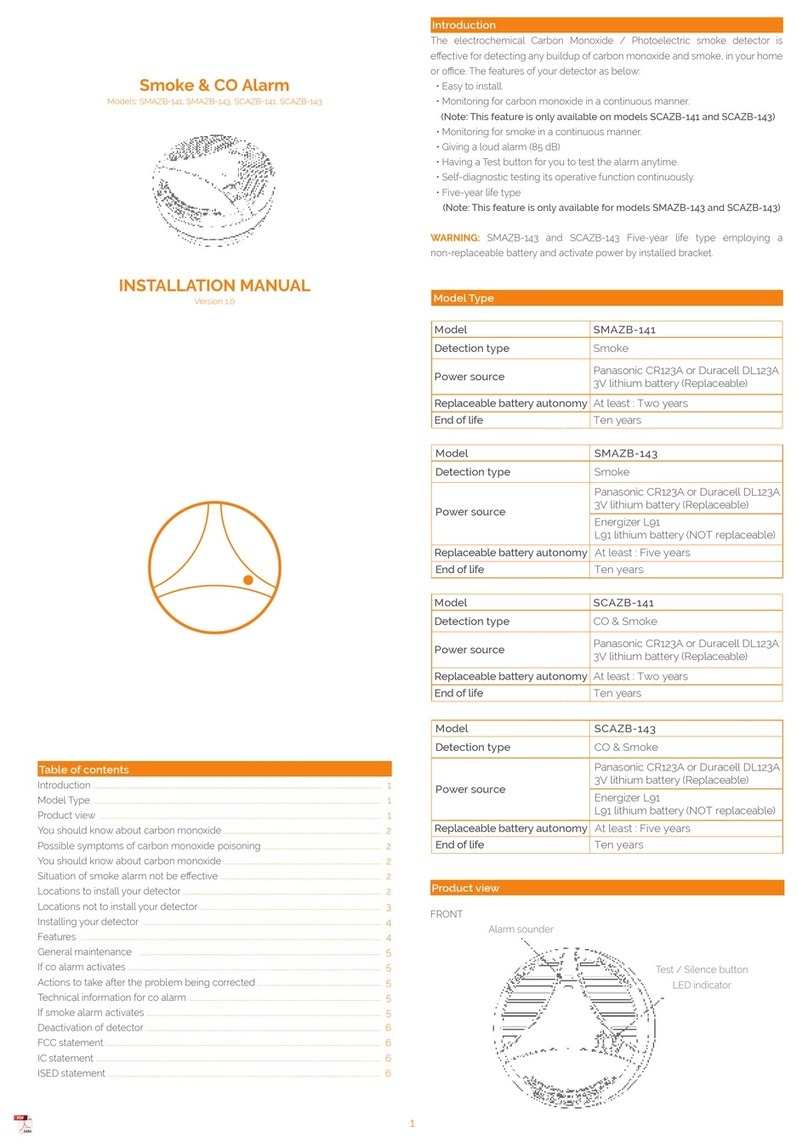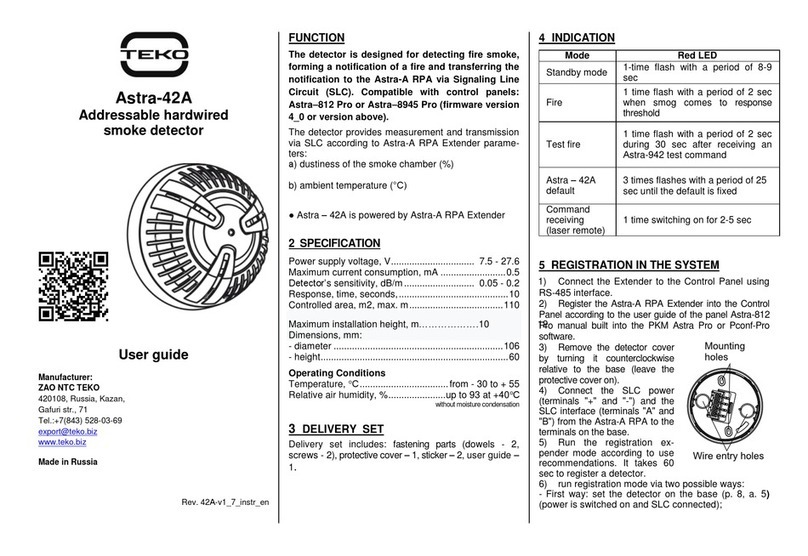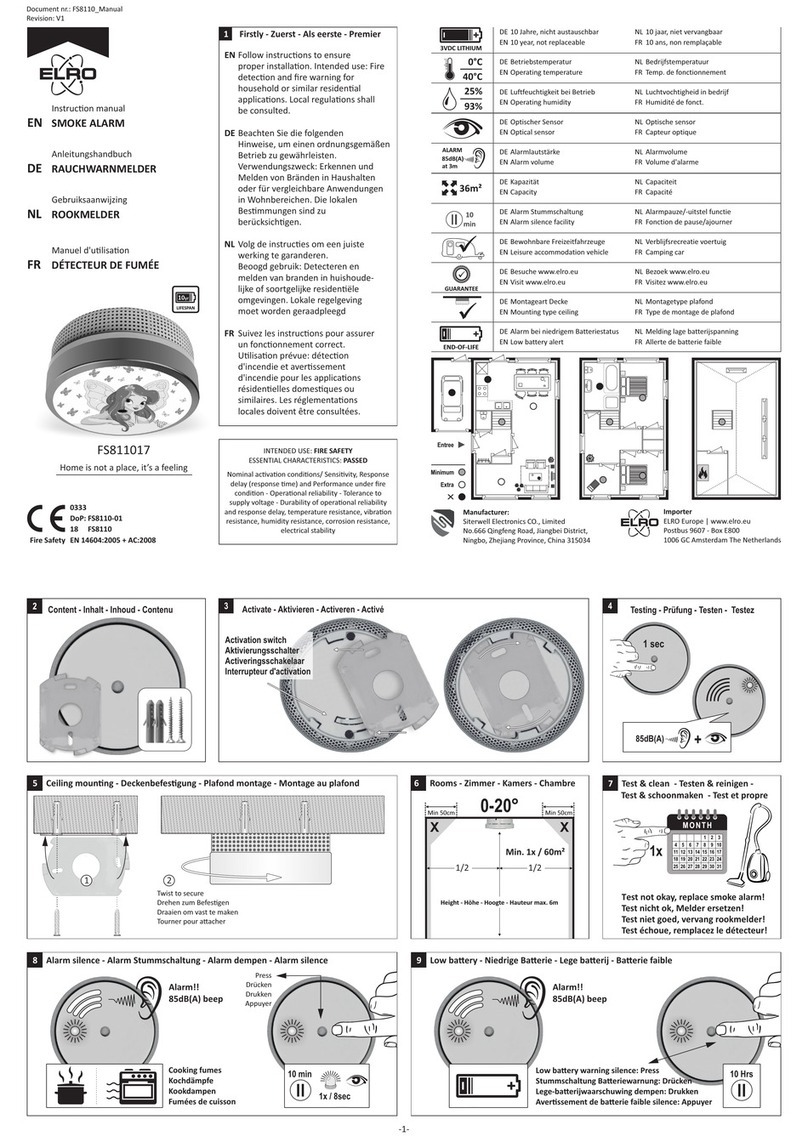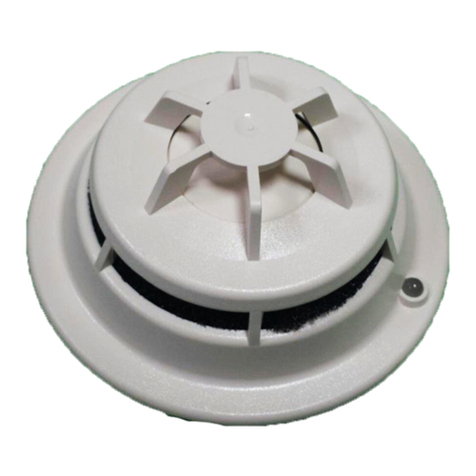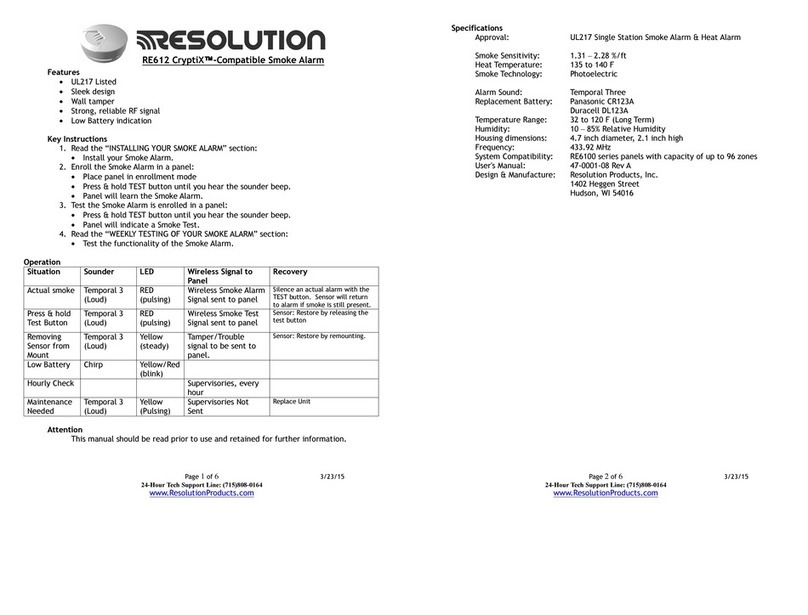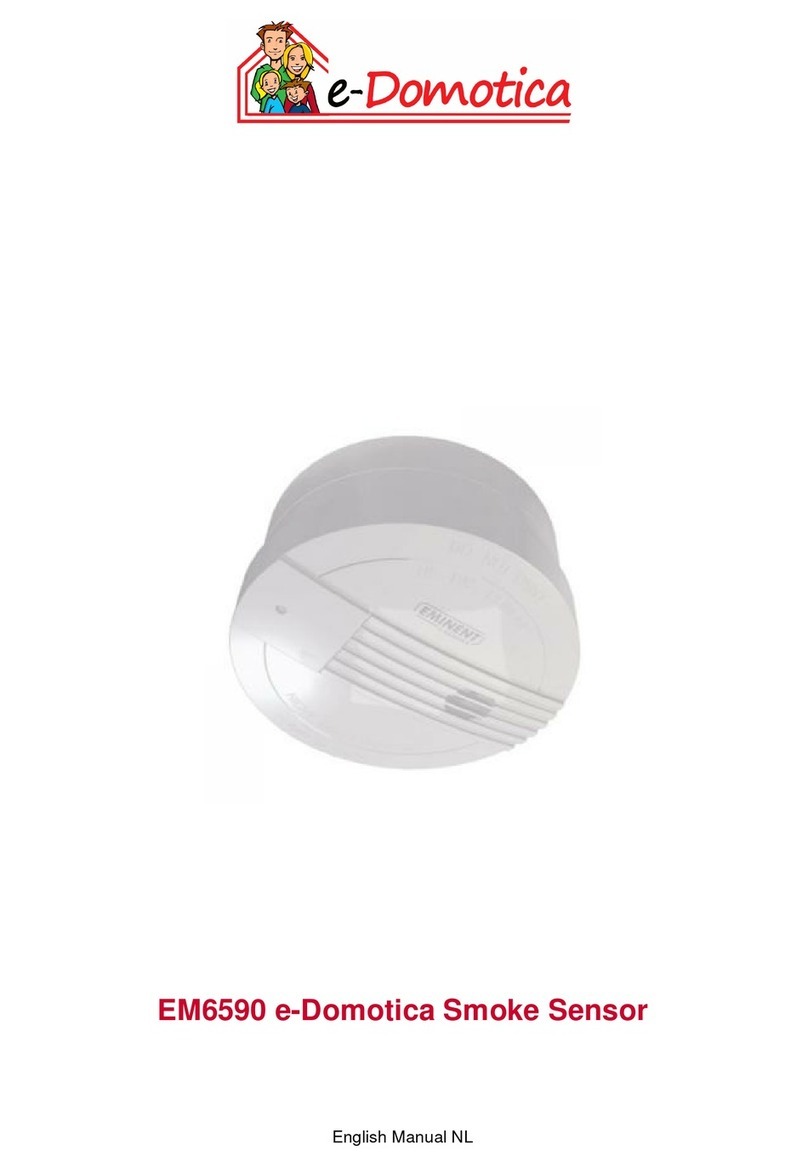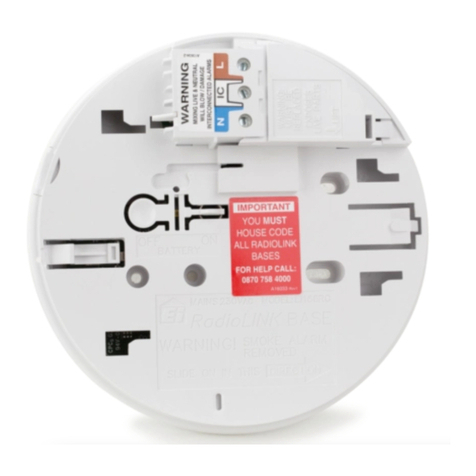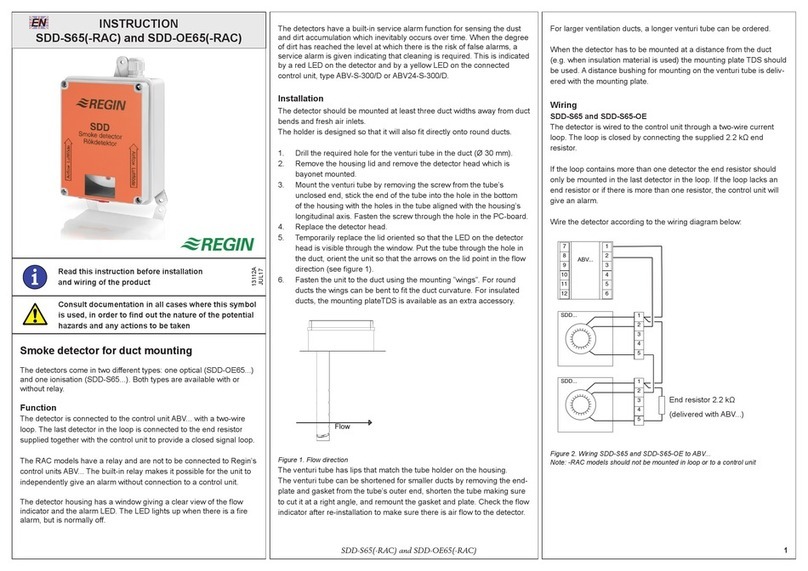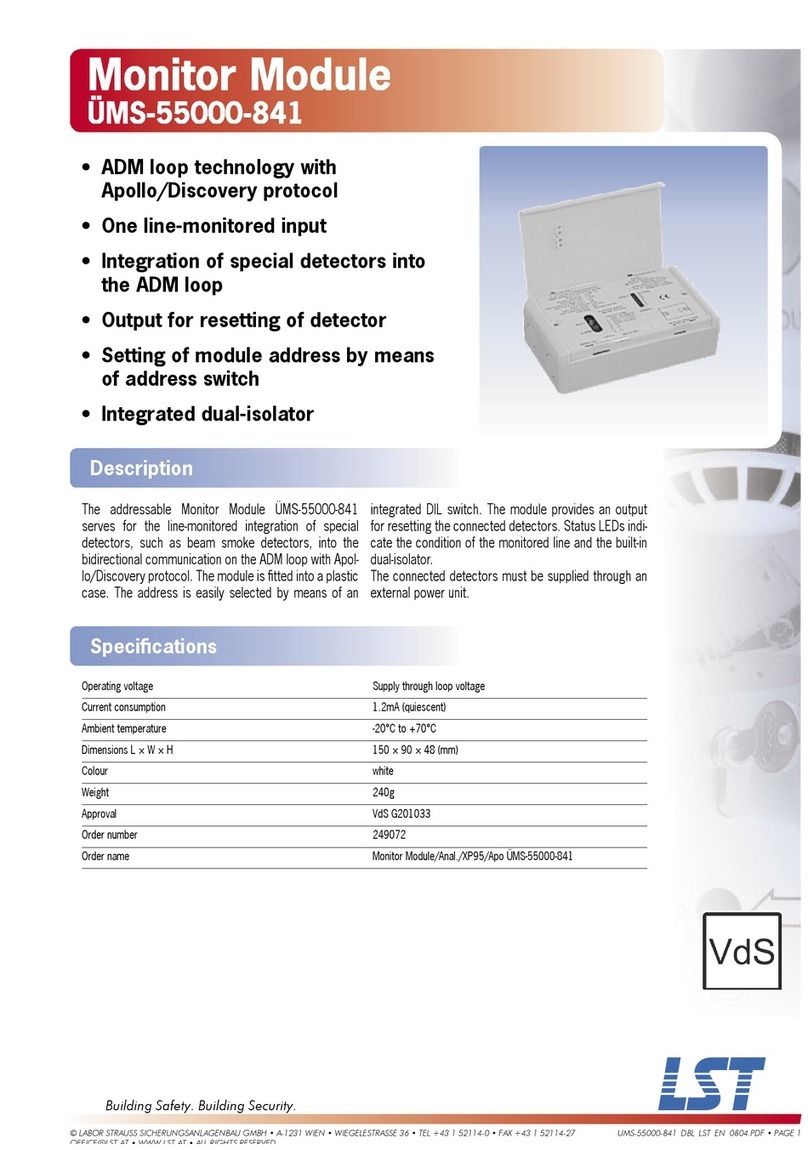14. Limitations of Smoke/Heat Alarms
Warning! Smoke alarms are devices that can provide early warning of possible fires at a rea-
sonable cost; however, alarms have sensing limitations. Ionisation sensing alarms may
detect invisible fire particles (associated with fast flaming fires) sooner than photoelectric
alarms. Photoelectric sensing alarms may detect visible fire particles (associated with slow
smoldering fires) sooner than ionisation alarms. Home fires develop in different ways and
are often unpredictable. For maximum protection, Kidde recommends that both Ionisation
and Photoelectric alarms be installed.
Heat alarms are useful in areas with condensation/dust/high humidity, such as kitchens and
lofts. Heat alarms MUST ALWAYS be interconnected to smoke alarms.
Heat alarms are triggered when a temperature of 57ºC is reached - they are not suitable for
use as a fire safety device independendently, they must always be used in conjunction and
interconnected to smoke alarms.
Loose batteries, where fitted must be of the specified type, in good condition and installed
properly.
AC only powered alarms will not operate if AC power has been cut off such as by an electri-
cal fire, an open fuse or loss of mains supply.
All alarms must be tested regularly to make sure the batteries and the alarm circuits are in
good operating condition.
Life safety from fire in residential occupancies is based primarily on early notification to
occupants of the need to escape, followed by the appropriate egress actions by those occu-
pants. Fire warning systems for dwelling units are capable of protecting about half of the
occupants in potentially fatal fires. Victims can be involved with the fire, too old or young, or
physically or mentally impaired such that they cannot escape even when warned early
enough that escape should be possible. For these people, other strategies such as protection-
in-place or assisted escape or rescue are necessary.
Smoke alarms cannot provide an alarm if smoke does not reach the unit. Therefore, smoke
alarms may not sense fires starting in chimneys, walls, on roofs, on the other side of a
closed door or on a different floor. If the alarm is located outside the bedroom or on a differ-
ent floor, it may not wake up a sound sleeper. Equally heat alarms will only be triggered if
they are correctly sited to detect heat. The use of alcohol or drugs may also impair ones abili-
ty to hear the alarm. For maximum protection a smoke alarm should be installed in each
sleeping area on every level of a home. Hearing impaired occupier should consider fitting
additional strobe accessories to give a visual alarm.
Although smoke/heat alarms can help save lives by providing an early warning of a fire, they
are not a substitute for an insurance policy. Home owners and renters should have adequate
insurance to protect their property.
If after reviewing this manual you feel that your smoke alarm is defective in any way, do not
tamper with the unit. Refer to Section 13. Contact your Installer, Wholesale Distributor or
Landlord.
Guarantee
Kidde Fyrnetics guarantees to you as a purchaser that the enclosed smoke alarm will be
free of defects in material, workmanship or design under normal use and service for a
period of 6 years, excluding any loose battery supplied. This extends to 10 years on
Hard Wired Rechargeable/Long Life, products (from the date of installation) including
the back up battery/powercell.
The Guarantee is not assignable. Our liability to you, under this guarantee is limited to
repairing or replacing any part which we find to be defective in material, workmanship
or design, free of charge to the customer, who is situated within the UK, upon sending
the alarm with proof of date of purchase, postage prepaid, to Kidde Safety Europe,
Mathisen Way, Colnbrook, SL3 0HB, UK.
The terms of this guarantee will not apply in the following circumstances: If alarm has
been damaged, modified, neglected, dismantled, contaminated, abused or altered after
the date of purchase, or if it fails to operate due to incorrect selection, siting, installa-
tion, maintenance or inadequate AC or DC electrical power,or damage caused by failure
to abide by the instructions supplied.
The liability of Kidde Fyrnetics, arising from the sale of this alarm or under the terms of
this guarantee shall not in any case exceed the cost of replacement of the alarm, in no
case, shall be liable for consequential loss or damaged resulting from the failure of the
alarm or for the breach of this or any other guarantee, express or implied, or for dam-
aged caused by failure to abide by the instructions supplied. This guarantee does not
affect your statutory rights.
Kidde Fyrnetics makes no guarantee, express or implied, written or oral, including that of sat-
isfactory quality or fitness for any particular purpose, with respect to the battery, except built-in
rechargeable/Long Life cells.
8
15. Service and Guarantee
